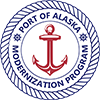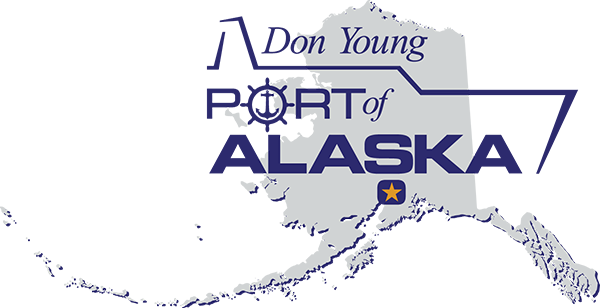Projects overview
PAMP comprises several projects. You can move the “before and after” slider below to see the current conditions of the Port and the eight projects that are planned.
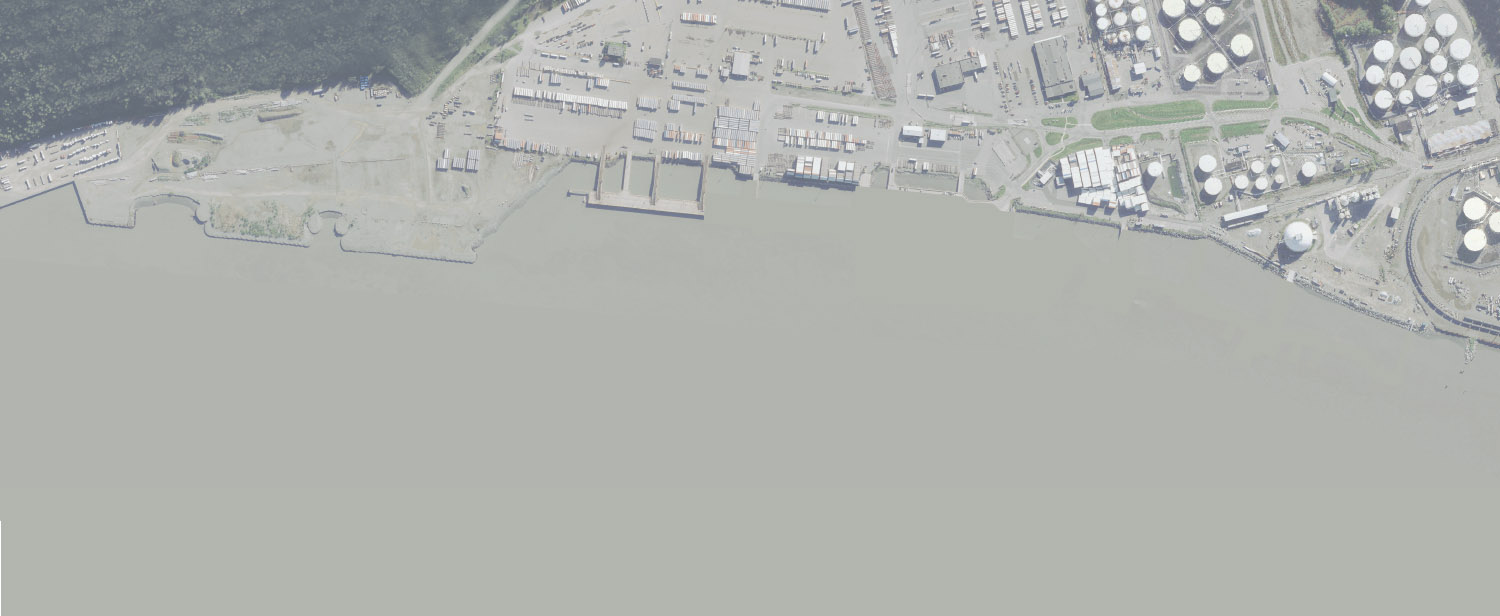
Petroleum and Cement Terminal
The Port finished construction of the Petroleum and Cement Terminal (PCT) in 2022. Completion of this terminal represents a significant milestone in PAMP. The new PCT is the first terminal completed and ensures the Port can meet Alaska’s fuel and cement needs into the future. The PCT was completed using a combination of Port of Alaska, state and federal funds.
The PCT is a pile-supported dock that serves as one of Port of Alaska’s two petroleum terminals and is Alaska’s only dock equipped with a bulk cement unloading and transfer system. It is located next to Alaska Basic Industries’ cement storage dome. The new PCT was constructed to replace the Petroleum, Oils and Lubricants Terminal 1 (POL1), which was built in 1965. POL1 is severely corroded and suffered significant structural damage during the magnitude 7.1 earthquake in November 2018. It will be demolished as part of the replacement of Cargo Terminals 1 and 2.


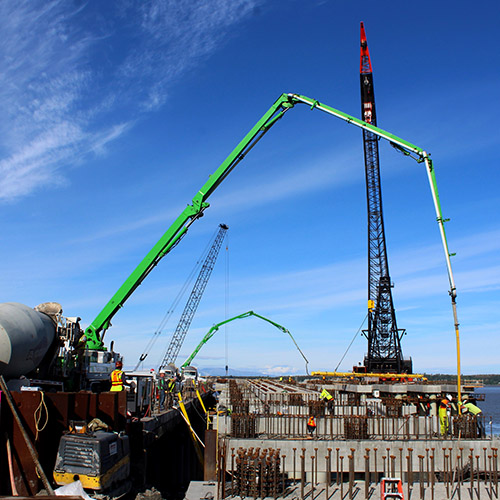
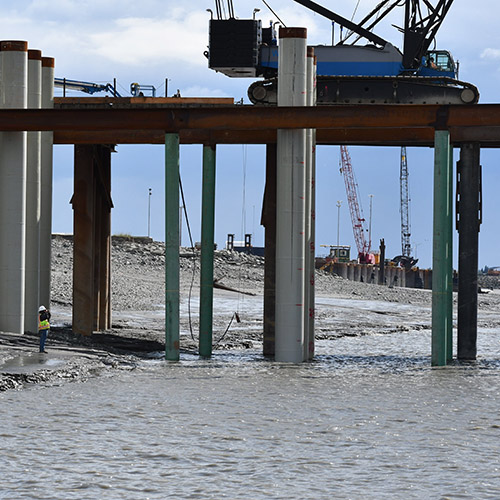
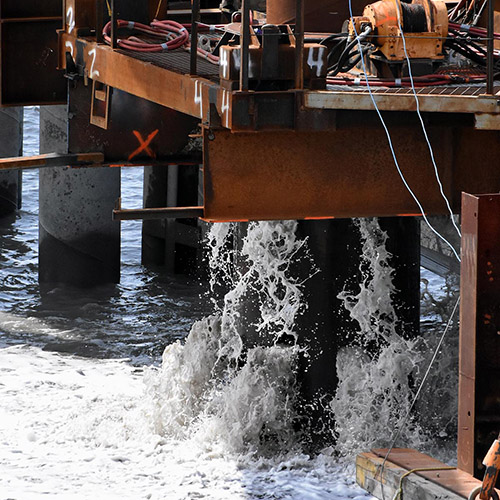
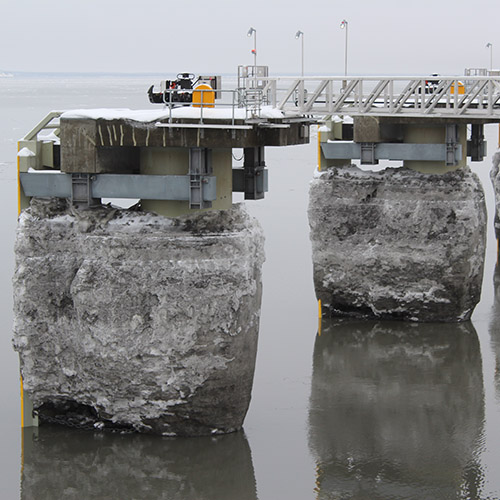
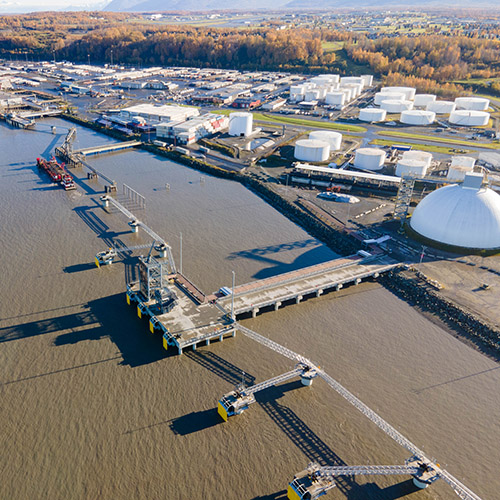
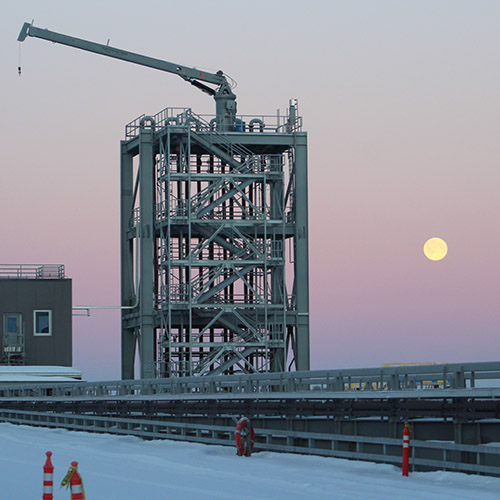
Cargo Terminals
Cargo activities operate year-round, providing 90% of Alaska residents with important life-sustaining necessities like food, consumer goods, building materials and cars. Replacing existing Port cargo facilities is key to ensuring the continued vitality of Alaska.
Preliminary design of the cargo terminals 1 and 2 were completed in late 2022. Cargo Terminal 1 (T1) will be constructed first, south of the existing terminals, in order to allow operations to continue uninterrupted. Engineers have completed final design of T1. Port of Alaska will fund construction of T1 using Port of Alaska Revenue Bonds and a federal grant of $50M unless State of Alaska and/or additional federal grants are awarded. Design and construction for Cargo Terminal 2 (T2) is planned, and construction will start shortly after. The existing cargo terminals will be partially demolished as a part of these project.
The new terminals will replace the existing ones with seismically capable structures built 140 feet seaward of the existing structure to reduce sedimentation impact, improve berthing safety, and allow for continued Port operations during construction. Both cargo terminals will support general cargo handling and operations and mooring for military and cruise ships.
T1 was awarded a Ports and Infrastructure Development Grant in 2024 at $50M.
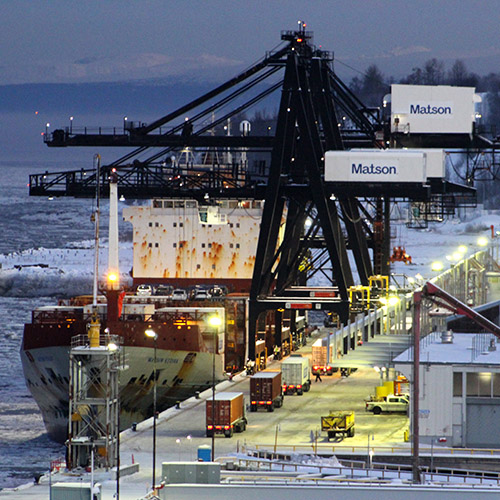
Port of Alaska’s existing cargo terminals.
North Extension Stabilization – Step 1 (NES1)
The North Extension Stabilization – Step 1 (NES1) project is underway and will stabilize a critical section of the failed North Extension directly adjacent to the shipping lane. Crews completed the first two years of the project by adding cement to the new shoreline to strengthen it, removing the sheet pile wall and partially excavating the fill. The project will be completed by excavating the remaining fill and creating the new shoreline alignment.
The North Extension was originally built in 2009 to serve as an intermodal expansion but was deemed a failure in 2012 by the Municipality of Anchorage and its advisors. The new alignment will result in a much safer and more easily navigable berthing for vessels at the cargo terminals during and after construction.
In 2022, the Port received a $68.7 million federal grant for NES1. It was the largest Ports and Infrastructure Development Grant that year.
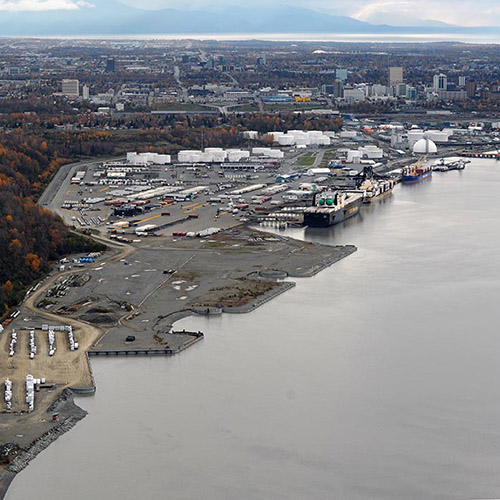
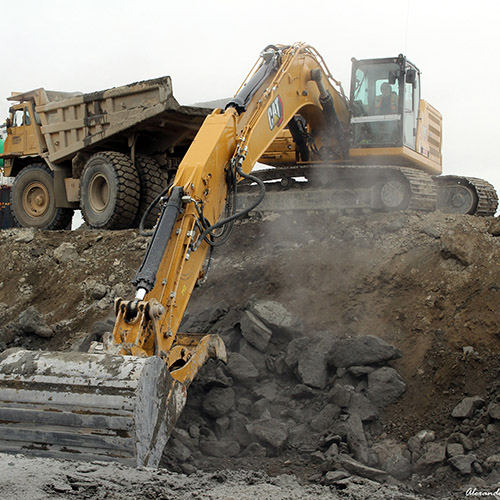

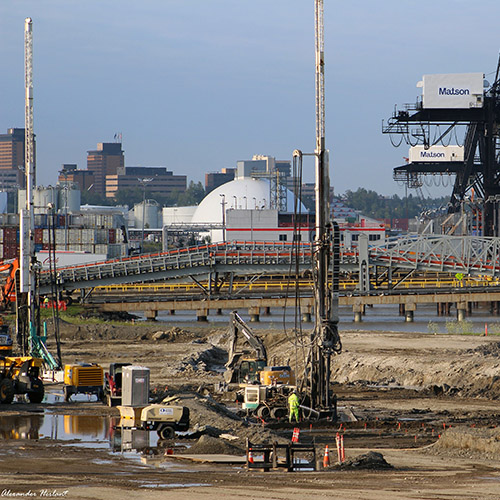
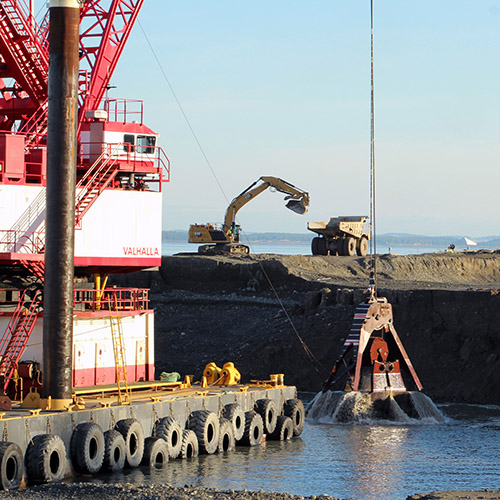
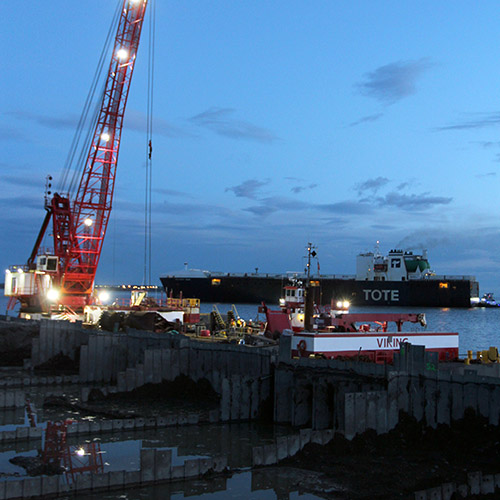
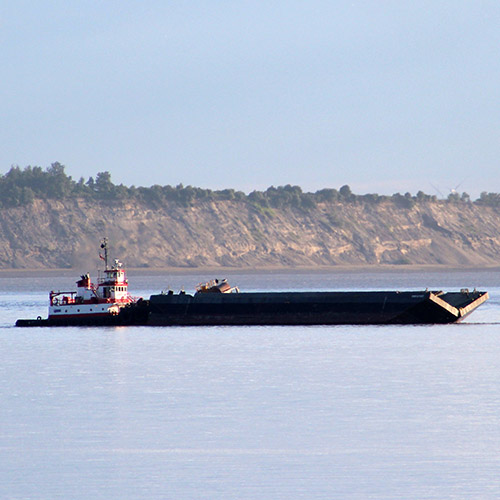
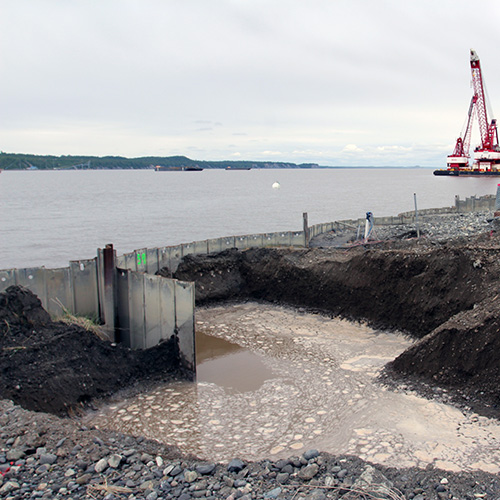
Check out this time lapse video showing how sheet pile is removed.
Administration Building
Construction of the new Administration Building began in 2022 and was completed in 2024. The original Administration Building ,located on the original deteriorated cargo terminal platform, will be demolished during cargo terminal construction. The new Administration Building has been constructed onshore and Port staff moved in on May 2024. The timely relocation of Port administration functions to the new building has made way for construction of the new cargo terminals.

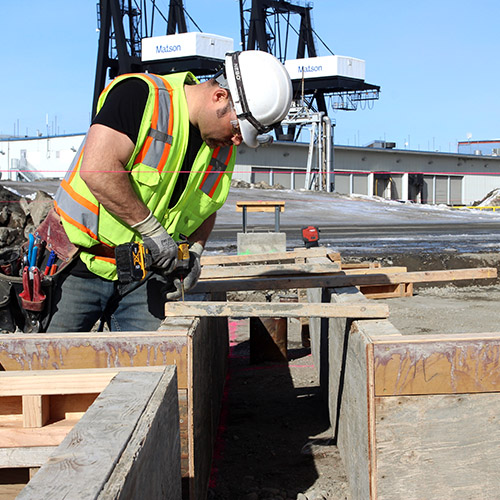

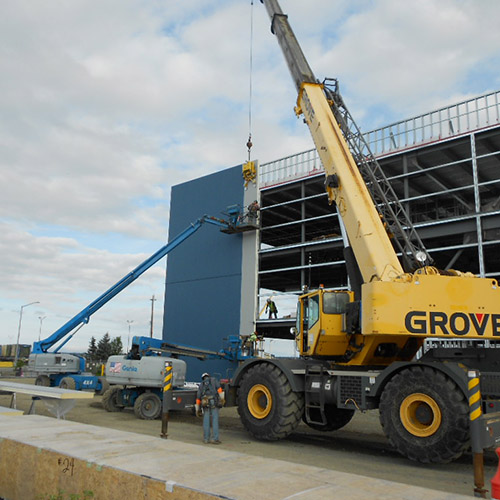
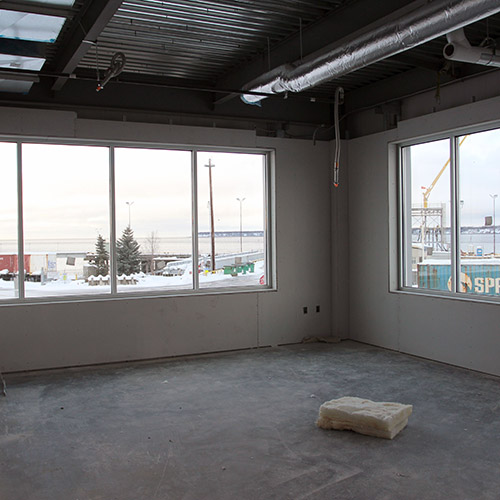

Planning for future projects
While the PCT, Cargo Terminals 1 and 2, Administration Building and NES1 have been the main focus, the team continues to plan for the remaining projects, which include:
Petroleum Terminal
Crews will replace the existing Petroleum, Oil and Lubricants Terminal 2 (POL2) with a new Petroleum Terminal (PT). The modernized PT will accommodate larger, more modern petroleum shipping vessels year-round.
North Extension Stabilization Step 2 (NES2)
Crews will demolish the failing sheet pile system and stabilize the shore for the rest of the North Extension. This area is not expected to affect Port of Alaska operations.
Demolition of Remaining Cargo Terminal
Since the remaining cargo terminal does not obstruct Port operations or construction of the new cargo terminals, it will be demolished at the end of the program.
Don Young Port of Alaska
Address:
2000 Anchorage Port Road
Anchorage, Alaska 99501
For more information or questions about PAMP, please email
portofalaska@anchorageak.gov
Copyright © 2025 Port of Alaska Modernization Program. All Rights Reserved.
